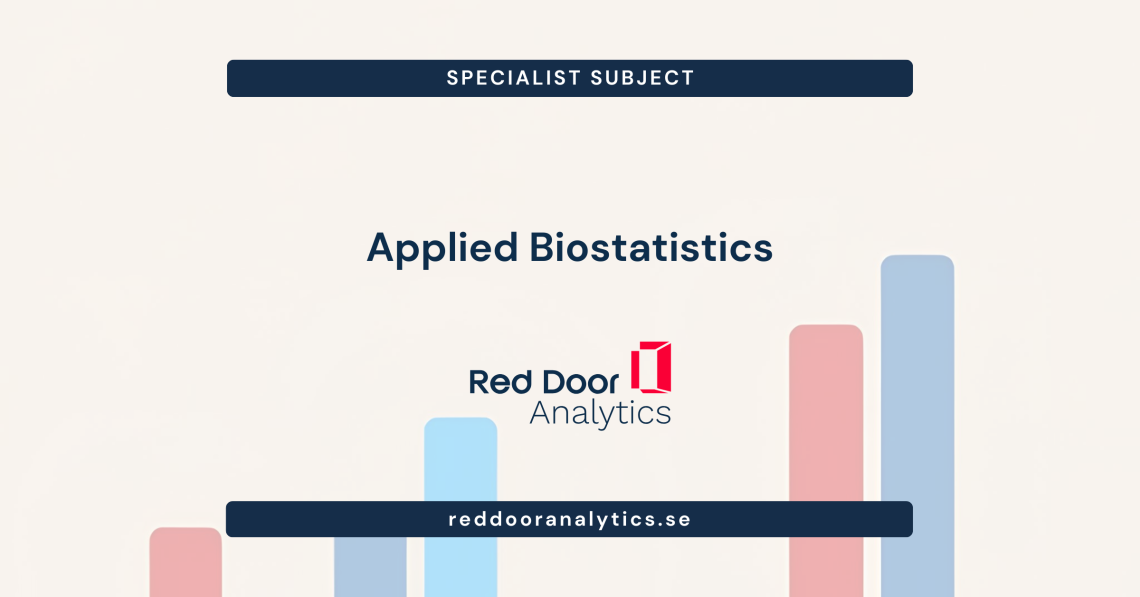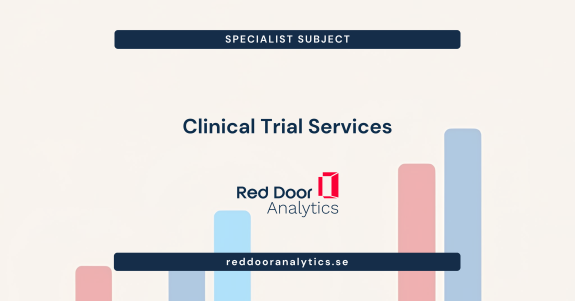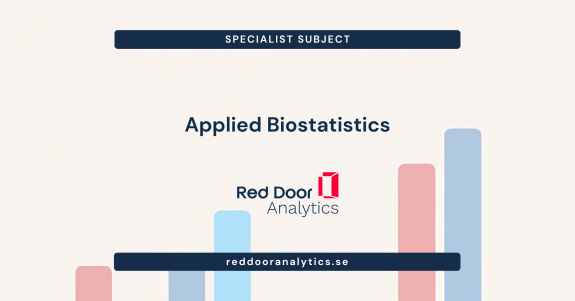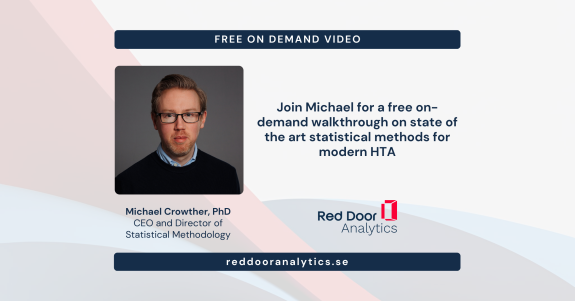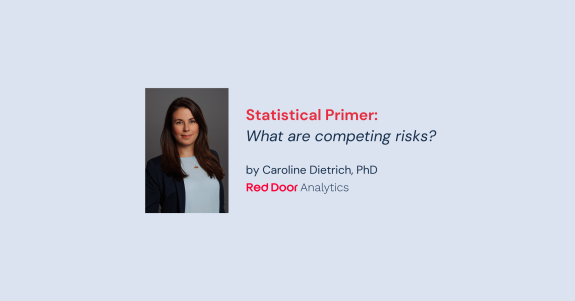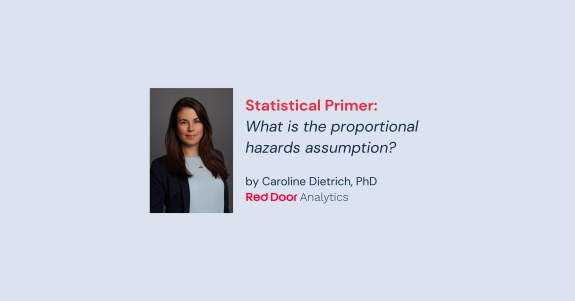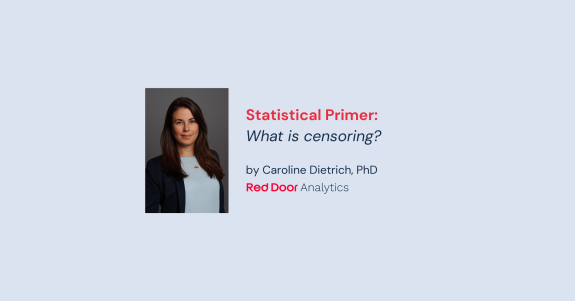Applied Biostatistics
Biostatistics plays a crucial role in advancing medical research. Whether it’s clinical trials, epidemiological studies, or pre-clinical research, biostatistics is essential for drawing meaningful, impactful conclusions from complex data.
Our team consists of internationally recognized experts in applied biostatistics, with deep experience in a wide range of areas such as survival analysis, multi-state modelling, joint modelling, relative survival, and data visualization. We have authored more than 120 publications in peer-reviewed articles across various medical disciplines including oncology, haematology, hepatology, and cardiology as well as in statical journals. We regularly present our research on new statistical methods at leading international conferences such as the annual conference of the International Society for Clinical Biostatistics. Our expertise spans from simple to advanced cutting-edge methods:
Statistical Topics
Survival Analysis
Survival analysis models the time until an event of interest occurs. We have experience in a range of models, from semi-parametric Cox models to advanced flexible parametric survival models, which easily incorporate commonplace non-proportional hazards. For example, Hannah Bower and colleagues utilized advanced flexible relative survival models to examine socioeconomic disparities in breast cancer survival [1]. They estimated that on average 692 life years could be saved per year by eliminating survival differences between education groups for a typical cohort of 3,500 breast cancer patients in Sweden.
Relative Survival
Relative survival is used to estimate net survival by comparing the survival of a specific group, such as cancer patients, with that of the general population, based on population mortality tables. Michael Crowther et al. applied relative survival models to assess the excess mortality due to COVID-19 in Switzerland, offering important insights into the pandemic’s public health impact[2]. Their analysis showed that mortality was particularly elevated among male and younger patients with COVID-19.
Multi-State Modelling
Multi-state modelling tracks the entire patient trajectory, from diagnosis to death, capturing the time spent in each health state along the way. Health states may include remission, disease progression, and other key stages. For instance, Sara Ekberg and Michael Crowther used advanced multi-state models to estimate the probability of lasting remission in large B-cell lymphoma patients, incorporating the full trajectory of the patient’s health [3]. They concluded that 80% of DLBCL patients in Sweden achieved durable first remissions, while those who relapsed rarely achieved lasting second remissions.
Longitudinal Analysis
Longitudinal analysis focuses on patient trajectories of continuous variables, such as blood marker levels, repeatedly measured over time. These models are ideal for applications like comparing blood pressure changes between treatment groups across multiple time points.
Joint Models
Joint models combine both longitudinal and survival models to investigate how a patient’s biomarker trajectory impacts their survival outcomes. These models allow for dynamic survival predictions that are updated with each new data point, such as a blood measurement. Michael Crowther et al., for example, developed a joint model for human chorionic gonadotropin (hCG) to generate dynamic predictions of early miscarriage risk [4].
Medical Areas
Haematology
Our team has extensive experience working in haematology, particularly in lymphoma and myeloma, with over 16 publications in peer-reviewed journals such as the Journal of Clinical Oncology (JCO). Sara Ekberg and Michael Crowther used advanced multi-state modelling to estimate the likelihood of lasting remission in large B-cell lymphoma patients, accounting for the entire patient trajectory. Hannah Bower used flexible parametric survival model to estimate life expectancy of patient with chronic myeloid leukaemia leading to an article that has been cited more than 900 times [5]. Joshua Entrop et al. developed a novel method to estimate the average number of childbirths after chemotherapy in non-Hodgkin lymphoma patients, incorporating the competing risks of death [6].
Oncology
We also have extensive expertise in oncology, including studies in breast and lung cancer, leading to 17 publications in peer-reviewed journals. Hannah Bower together with colleagues used flexible parametric survival models to estimate loss in working years after breast cancer diagnosis [7]. Additionally, Alessandro Gasparini employed a new, innovative copula-based model to understand the natural history of breast cancer and the effects of population-level interventions [8].
Please check out our resource page to see all our specialist subjects.
References
(1) Bower H, Andersson TM, Syriopoulou E, Rutherford MJ, Lambe M, Ahlgren J, et al. Potential gain in life years for Swedish women with breast cancer if stage and survival differences between education groups could be eliminated–Three what-if scenarios. The Breast 2019;45:75-81.
(2) Hothorn T, Bopp M, Günthard H, Keiser O, Roelens M, Weibull CE,Crowther MJ. Assessing relative COVID-19 mortality: a Swiss population-based study. BMJ Open 2021; 11(3), pp. e042387.
(3) Ekberg S,Crowther M, Harrysson S, Jerkeman M, Ekström Smedby K, Eloranta S. Patient trajectories after diagnosis of diffuse large B-cell lymphoma—a multistate modelling approach to estimate the chance of lasting remission. British Journal of Cancer 2022;127(9):1642-1649.
(4) Ashra N, Mariott L, Johnson S, Abrams KR,Crowther MJ. Jointly modelling longitudinally measured urinary human chorionic gonadotrophin and early pregnancy outcomes. Scientific Reports 2020;10(1):4589.
(5) Bower H, Björkholm M, Dickman PW, Höglund M, Lambert PC, Andersson TML. Life expectancy of patients with chronic myeloid leukemia approaches the life expectancy of the general population. Journal of Clinical Oncology2016;34(24):2851-7.
(6) Entrop JP, Weibull CE, Smedby KE, Jakobsen LH, Øvlisen AK, Glimelius I, Marklund A, Larsen TS, Holte H, Fosså A, Smeland KB, El-Galaly TC, Eloranta S. Reproduction patterns among non-Hodgkin lymphoma survivors by subtype in Sweden, Denmark and Norway: A population-based matched cohort study British Journal of Haematology2023; 202(4): p 785-795
(7) Plym A,Bower H, Fredriksson I, Holmberg L, Lambert PC, Lambe M. Loss in working years after a breast cancer diagnosis. British Journal of Cancer 2018;118(5):738-43.
(8) Gasparini A, Humphreys K. A natural history and copula-based joint model for regional and distant breast cancer metastasis. Statistical Methods in Medical Research, 31, 12, 2415-2430, 2022

